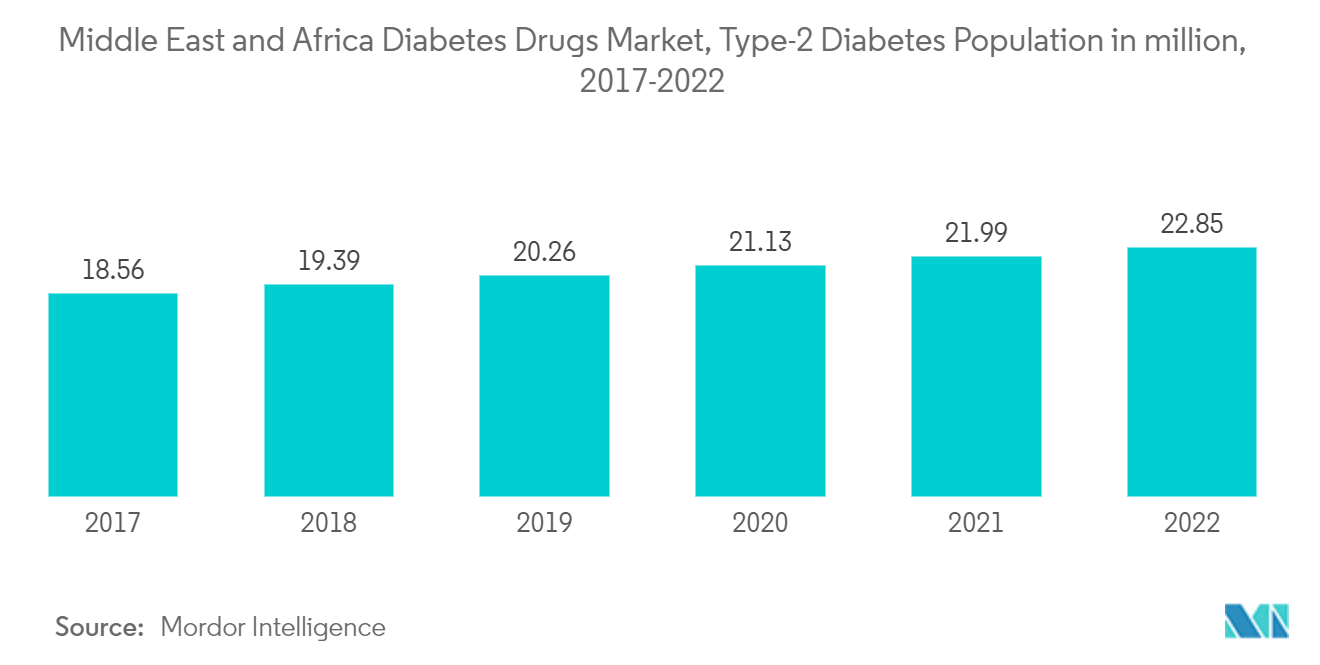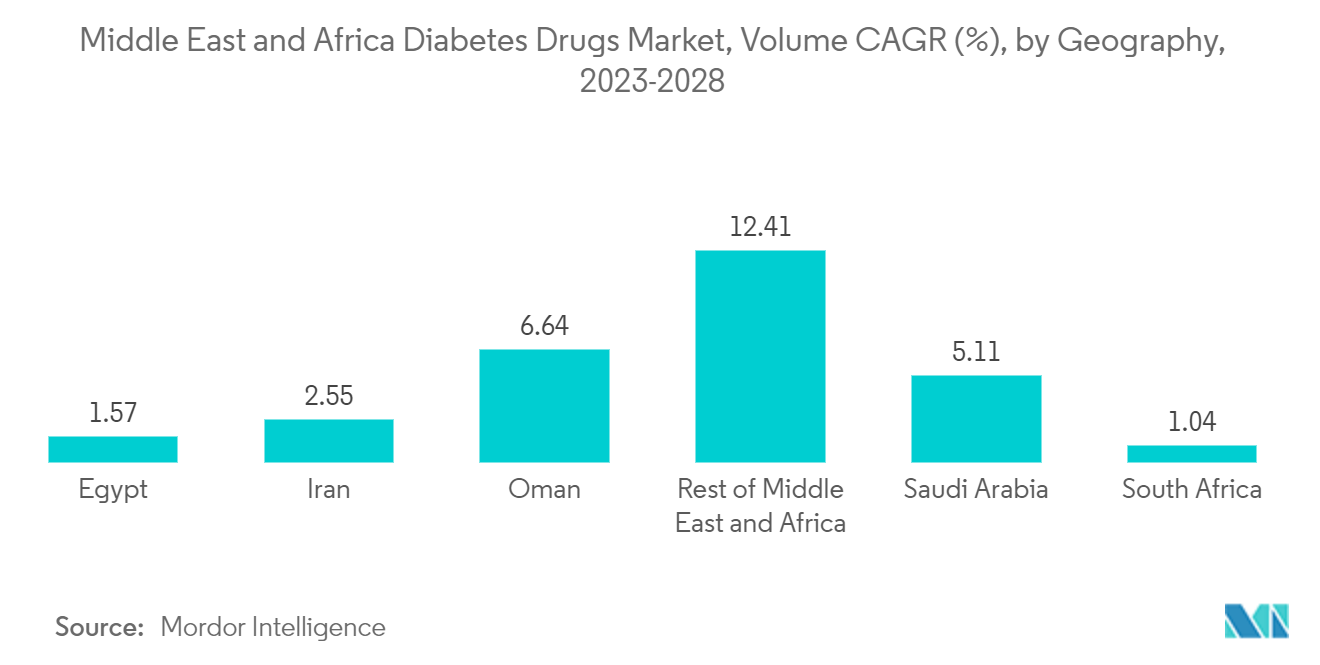Market Trends of Middle East and Africa Diabetes Drugs Industry
The Oral Anti-Diabetic Drugs Segment is expected to dominate the Middle East and Africa Diabetes Drugs Market over the forecast period
The oral anti-diabetic drugs segment is expected to dominate the Middle East and Africa diabetes drugs market and register the highest CAGR of about 7.7% over the forecast period.
Oral anti-diabetic drugs have been available internationally and are recommended for use when escalation of treatment for type-2 diabetes is required along with lifestyle management. Oral agents are typically the first medications used in the treatment of type-2 diabetes due to their wide range of efficacy, safety, and mechanisms of action. Antidiabetic drugs help diabetes patients keep their condition under control and lower the risk of diabetes complications. People with diabetes may need to take antidiabetic drugs for their whole lives to control their blood glucose levels and avoid hypoglycemia and hyperglycemia. Oral anti-diabetic agents present the advantages of easier management and lower cost, so they became an attractive alternative to insulin with better acceptance, which enhances adherence to the treatment.
In July 2022, Zydus Lifesciences announced that it received final approval to market empagliflozin and metformin hydrochloride tablets in multiple strengths. Empagliflozin and metformin hydrochloride tablets are used with proper diet and exercise to improve glycemic control in adults with type-2 diabetes mellitus. They are also used to lower the risk of cardiovascular death in patients with type-2 diabetes mellitus and established cardiovascular disease.
Governments in the ME have identified the threat of diabetes and started to respond with various policies, initiatives, and programs. Most countries have fully implemented national diabetes treatment guidelines. Six out of 15 countries in this region still do not have a national operational action policy for diabetes. Many countries still do not have a national strategy to reduce overweight, obesity, and physical inactivity, which are important risk factors for diabetes. However, constant measures are being taken to minimize diabetic complications.
Owing to the rising rate of obesity, the growing genetic factors for type-2 diabetes, the increasing prevalence, and the aforementioned factors, it is likely that the market will continue to grow.

Saudi Arabia is expected to dominate the Middle East and African Diabetes Drugs Market over the forecast period
Saudi Arabia holds the highest market share in the Middle East and African diabetes drug markets and is also expected to register a CAGR of around 12.1% over the forecast period.
More than one in ten people in Saudi Arabia lived with diabetes, and the prevalence of the disease was expected to almost double by 2045, according to the IDF 2021 report. The IDF report mentioned that 4.27 million people in Saudi Arabia, which has a population of about 34.8 million, have diabetes, while 1.86 million people have the disease but are yet to be diagnosed. This figure is estimated to increase to 5.6 million by 2030 and further to 7.5 million by 2045.
The growing incidence, prevalence, and progressive nature of the disease have encouraged the development of new drugs to provide additional treatment options for diabetic patients. Non-insulin treatments, used as first-line therapies for patients suffering from type-2 diabetes, currently capture more than half the sales in the anti-diabetic market. Over the past decade, two important classes have entered this market: dipeptidyl peptidase-4 inhibitors (DPP-4) and sodium-glucose cotransporter-2 inhibitors (SGLT-2). Oral antidiabetic agents work in various ways to reduce blood sugar levels in people with type-2 diabetes; some stimulate insulin secretion by the pancreas, and others improve the responsiveness of cells to insulin or prevent glucose production by the liver. Others slow the absorption of glucose after meals.
There have been constant innovations and studies relating to drug molecules or formulation technologies. For instance, Hanmi Pharmaceutical announced in September 2021 that its new, long-acting diabetes biologic drug, efpeglenatide (GLP-1 RA), was shown to significantly reduce incidences of major adverse cardiovascular events (MACE) and kidney disease in the results of its global, large-scale clinical trial with more than 4,000 patients, adding to the efficacy of the drug.
In July 2022, the Saudi Government announced that Saudi Arabia saw growing demand for quality healthcare services, spurred by changes including an increasing and aging population and a growing prevalence of lifestyle diseases such as diabetes and obesity. The government and private sector are both involved in working on healthcare entities, certifications, and regulations. The government is taking steps to have 100 percent of Saudi citizens covered by insurance and is working towards ensuring affordability, access, and quality digital healthcare and primary care with cost-effectiveness.
Owing to the aforementioned factors, the market is expected to grow during the forecast period.

